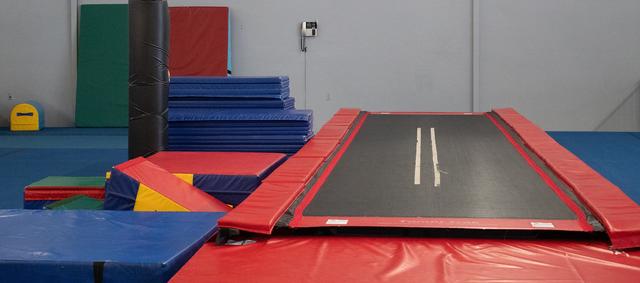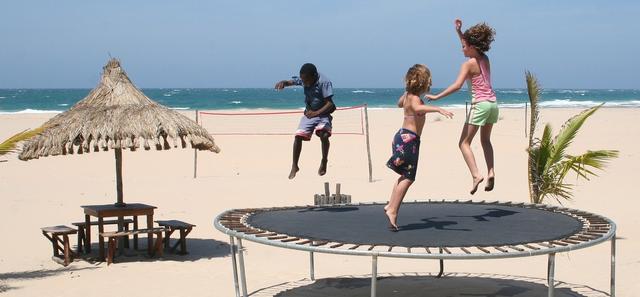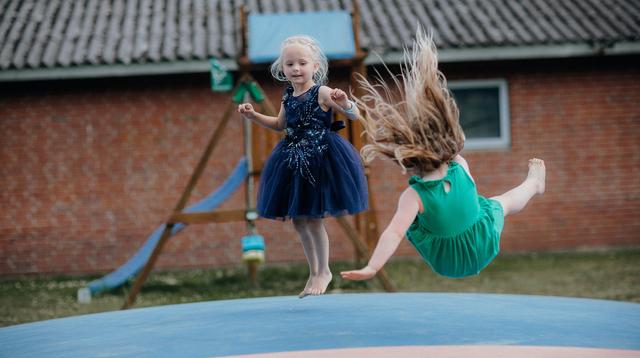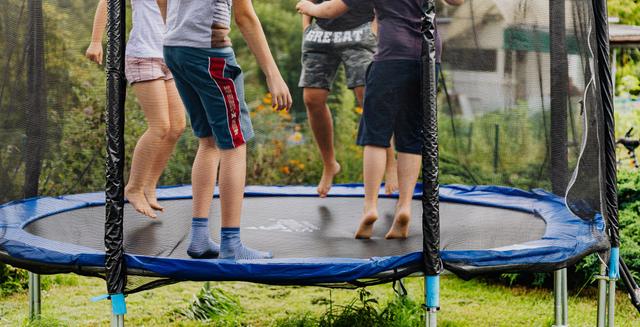Trampolining Articles
Trampolining For Kids In The UK
Trampolining has become a beloved activity among children in the UK, combining fun with physical exertion in a unique way. The roots of trampolining as a structured sport reach back to the 1930s, initially emerging within the realm of physical therapy before shifting towards a more recreational and competitive pursuit. By the 1950s, it captured the public’s imagination, paving the way for the inaugural British Trampoline Championships in 1957. This marked the beginning of a notable ascent in popularity, culminating in its inclusion in prestigious events such as the European Championships in 1993 and eventually its Olympic debut in the 2000 Sydney games.
This popular form of activity allows kids to experience the thrill of bounding skywards, a sensation that not only entertains but also embeds a sense of achievement and progress as they learn and master various skills and routines. The structured nature of the sport, including local clubs and national competitions, provides a robust framework for participants to not only engage in physical activity but also connect with peers, fostering a sense of community and shared enthusiasm for the sport. In the UK, the well-organised trampoline events and clubs offer children a platform to showcase their skills, contributing to the sport's ongoing appeal and its revered status among other popular children's activities.
The Benefits of Trampolining
Trampolining is a dynamic activity that delivers compelling health benefits for children in the UK. It is not only a heart-pumping exercise but also a fun way to improve cardiovascular health, increasing children's stamina and endurance. The sport's diverse movements contribute to stronger muscles across the body, aiding in developing toned legs, core, and arms.
Trampolining also enhances coordination and balance. As children learn to manage their body movements in mid-air, they gain better control and finesse, which can be advantageous in daily activities and other sports. Furthermore, this enjoyable exercise enhances flexibility. Regular bouncing encourages the stretching and strengthening of muscles, making children more agile.
Besides the physical perks, trampolining has notable psychological advantages. It is a delightful activity that naturally elevates mood and decreases stress and anxiety levels in children. The euphoria of leaping and the laughter it often brings can significantly improve a child's overall emotional well-being, making trampolining a wholesome activity for both the body and mind.
FAQs
1. What are the benefits of trampolining for children? Trampolining offers numerous health benefits for kids, including improved cardiovascular health, increased muscle strength and tone, enhanced coordination and balance, increased flexibility, and mood-boosting effects. It is an excellent form of physical activity that not only helps in their physical development but also in improving their mental wellbeing.
2. At what age can children start participating in trampolining activities? Children as young as two years old can enjoy trampolining, especially on mini trampolines designed for their age group with adult supervision. For more structured trampolining, particularly on larger trampolines, it is advisable for kids to start at the age of six when they have better coordination and listening skills.
3. Are there any specific safety measures that should be taken while children are trampolining? Yes, safety is paramount when children are trampolining. Ensure the trampoline is in good condition and placed on a flat, safe surface. Use safety nets and padding where possible. It is also important for children to be supervised by adults at all times, and only one child should use the trampoline at a time to avoid collisions.
4. Can trampolining improve school performance in children? Trampolining can indirectly help improve school performance by increasing blood flow, which aids in better brain function. It also helps in improving concentration and reducing stress levels, allowing children to be more focused and effective in their studies.
5. Is competitive trampolining available for children in the UK? Yes, children in the UK have the opportunity to engage in competitive trampolining. The sport has a structured competitive framework in the UK with various championships held annually. From local club competitions to national events, children who are interested in competitive trampolining have many opportunities to develop and showcase their skills.









